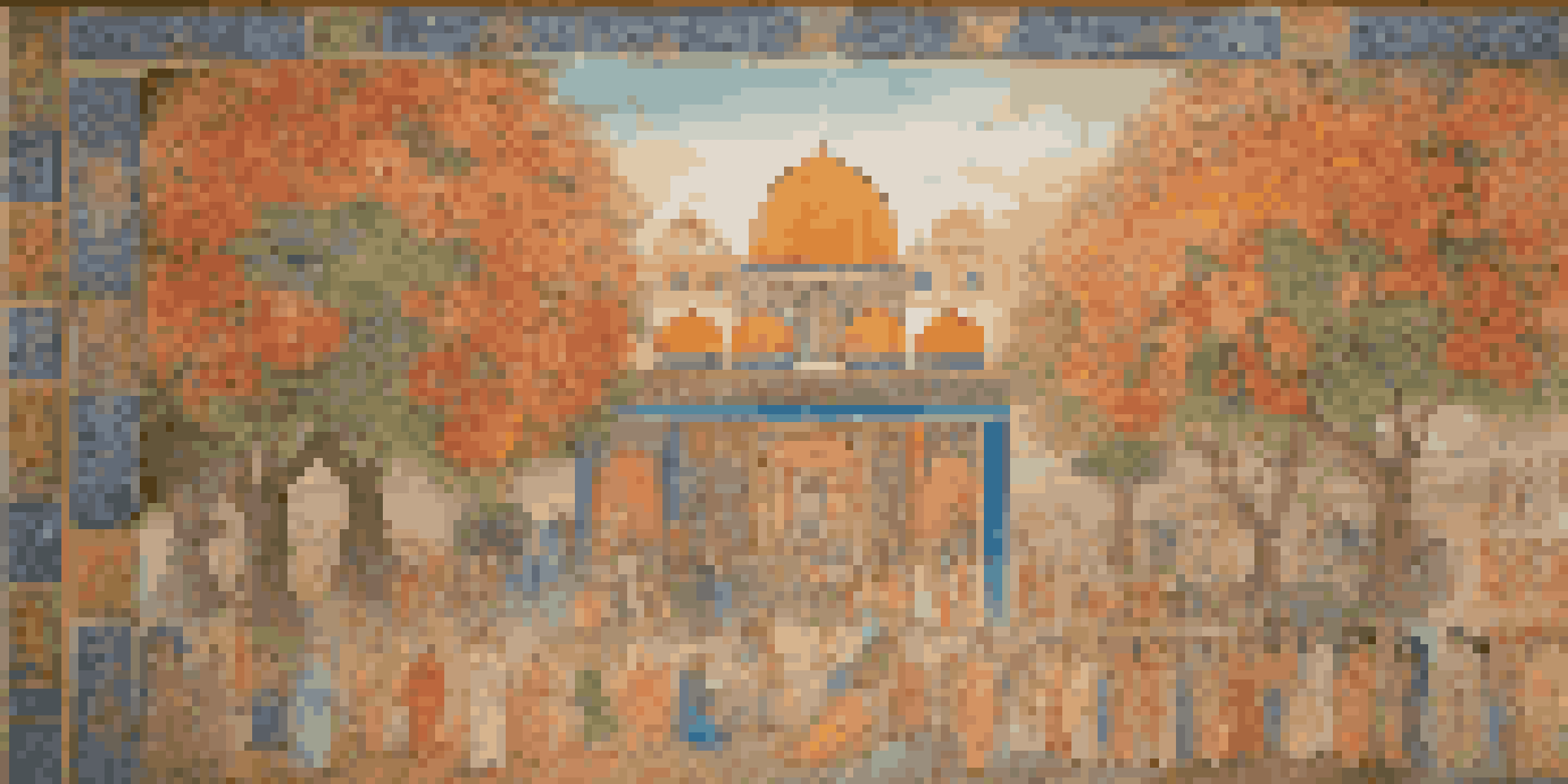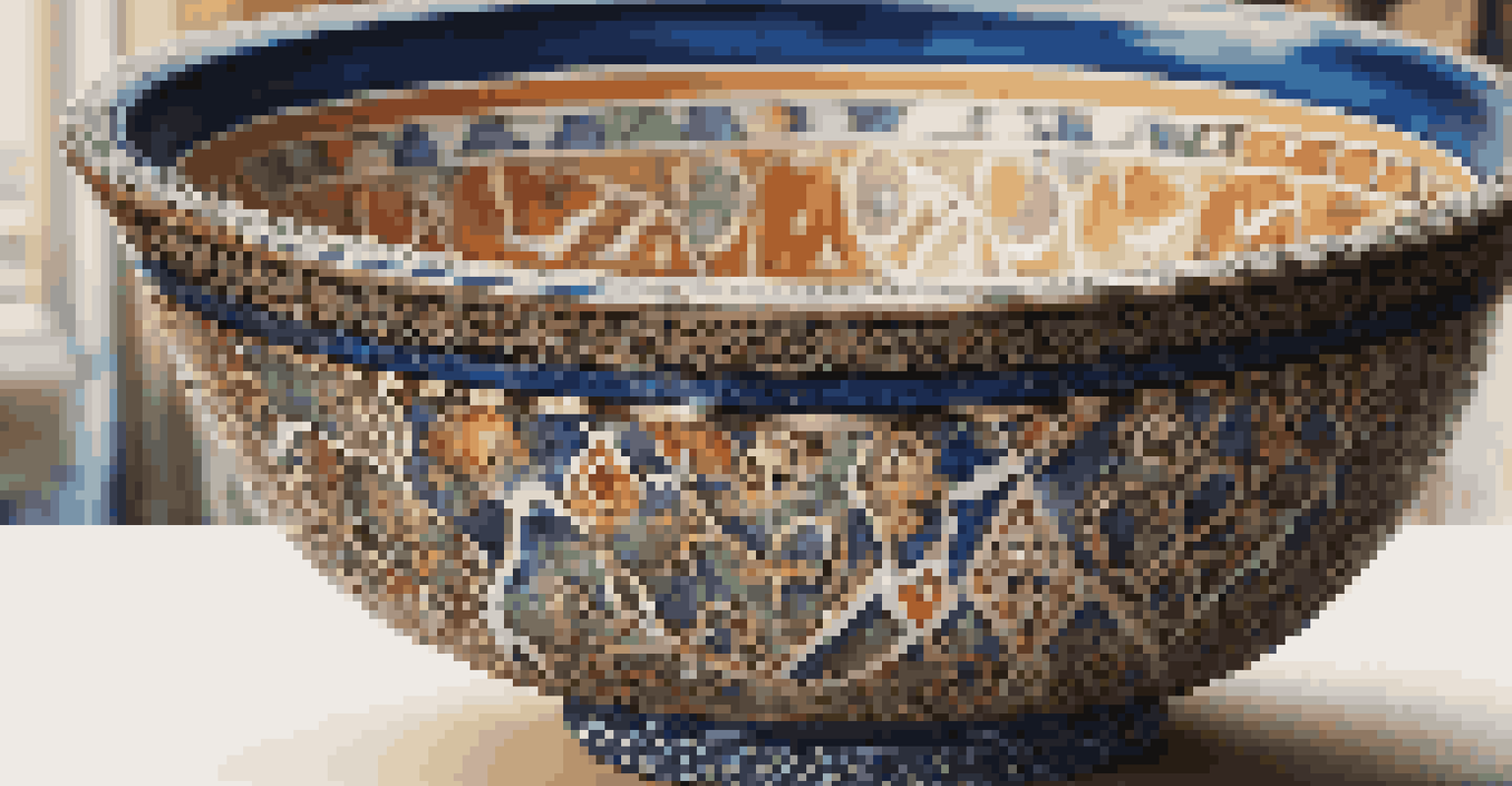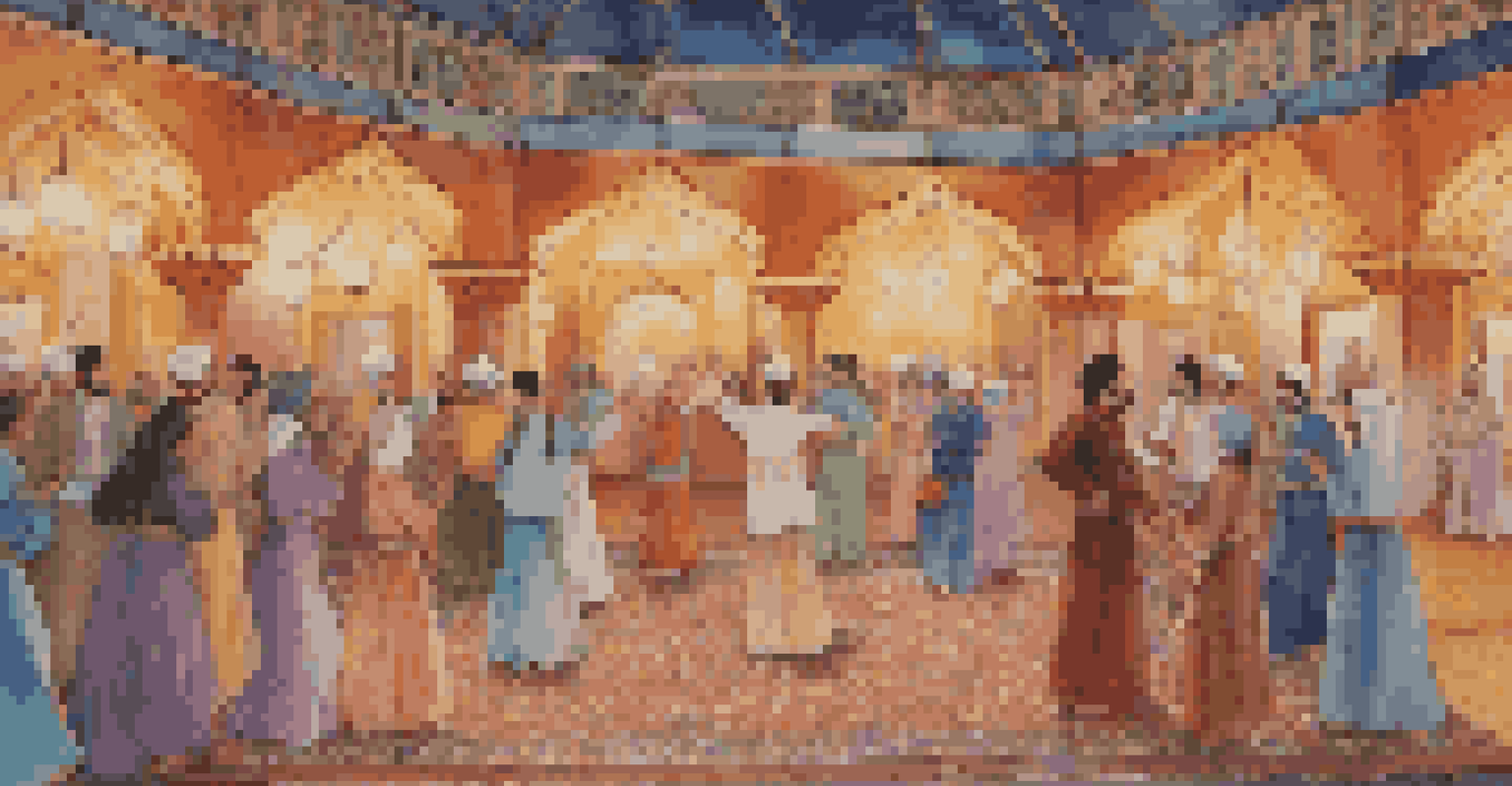The Role of Art in the Rituals of the Ancient Persians

The Significance of Rituals in Ancient Persian Culture
Rituals were the heartbeat of ancient Persian society, encapsulating their beliefs, traditions, and values. These ceremonies, ranging from religious observances to celebrations of seasonal changes, were integral in fostering community bonds. They provided a structured way for people to connect with the divine and with one another, creating a sense of belonging.
Art is the most beautiful of all lies.
Art played a pivotal role in these rituals, serving as both an expression of spirituality and a means of storytelling. Whether through elaborate frescoes or intricate carvings, Persian artists captured the essence of their culture's beliefs and practices. This artistic representation helped to convey the significance of the rituals, making them more relatable and engaging for participants.
Additionally, these rituals often involved performance art, including music and dance, which added layers of meaning and emotion. The visual and auditory elements combined to create a multi-sensory experience, allowing participants to immerse themselves fully in the occasion.
Art as a Medium of Spiritual Connection
In ancient Persia, art was not just for aesthetic pleasure; it was a crucial medium for spiritual connection. Religious rituals often featured artistic expressions that symbolized deeper truths and narratives from their mythology. For instance, the depiction of the divine in sculptures and reliefs provided a tangible way for worshippers to engage with their deities.

These artistic representations served to remind the community of their shared beliefs and values, reinforcing their cultural identity. The intricate designs and motifs were not mere decorations; they were infused with meaning that connected the physical world to the spiritual realm. This connection was vital for the ancient Persians, who believed in the importance of maintaining harmony between the two.
Rituals Foster Community Bonds
Ancient Persian rituals were essential in creating a sense of belonging and connection among individuals through shared spiritual and cultural practices.
Moreover, art in rituals often included the use of sacred symbols that held specific meanings in their culture. By incorporating these symbols into their ceremonies, the Persians could invoke protection, blessings, and a sense of divine presence, further enriching their spiritual experience.
The Influence of Nature in Persian Artistic Rituals
Nature held a special place in ancient Persian rituals, and this connection was beautifully expressed through art. The changing seasons, celestial events, and agricultural cycles were often celebrated with rituals that included artistic representations of the natural world. This practice underscored the Persians' respect for nature and its cycles, recognizing their dependence on the environment.
Ritual is the way of the spirit; it is the way of the heart and the mind, and it is the way of the community.
For example, during springtime festivals, artists would create vibrant representations of blooming flowers and lush landscapes, symbolizing renewal and fertility. These artworks not only beautified the ceremonial space but also served as reminders of the importance of nature in their lives. They acted as a bridge between the community and the natural world, emphasizing their gratitude for its bounty.
Additionally, the incorporation of natural elements into rituals reflected a belief in the interconnectedness of all things. By honoring nature through art, the ancient Persians expressed their understanding of life's cycles and the importance of living in harmony with the earth.
Symbolism in Persian Art and Rituals
Symbolism is a key component in understanding the role of art in ancient Persian rituals. Every motif, color, and form carried specific meanings that contributed to the overall message of the ritual. For instance, the use of the lion, a symbol of strength and royalty, often appeared in ceremonial contexts, emphasizing the power and protection of their rulers.
Persian artisans skillfully wove these symbols into their work, making each piece a narrative in itself. Whether it was through textiles, pottery, or metalwork, the rich symbolism provided layers of meaning that could be interpreted in various ways. This depth encouraged participants to reflect on their beliefs and the significance of the rituals being performed.
Art Connects the Spiritual and Natural
Incorporating art into rituals allowed ancient Persians to symbolize their beliefs and express their reverence for nature, highlighting the interconnectedness of all things.
By engaging with these symbols, individuals could deepen their understanding of their culture and connect with their heritage. This engagement fostered a sense of unity among participants, as they collectively interpreted and celebrated their shared history through the lens of art.
Artistic Techniques Used in Rituals
The ancient Persians employed a variety of artistic techniques in their rituals that enhanced the ceremonial experience. Techniques such as fresco painting and intricate tile work brought vibrant colors and intricate patterns to life, creating visually stunning environments. These artistic elements helped set the mood and tone for the rituals, making them more impactful for participants.
In addition to painting, Persian artisans were skilled in metalwork and ceramics, crafting intricate objects that were often used in rituals. These handcrafted items were not only functional but also served as artistic expressions that reflected the culture's values and beliefs. The skill and artistry involved in creating these pieces added a layer of reverence to the rituals.
Moreover, the use of music and dance incorporated rhythmic movements that complemented the visual arts. This multi-faceted approach to art in rituals created a dynamic atmosphere, engaging all the senses and allowing participants to experience the rituals in a profound way.
Art as a Legacy of Persian Culture
The art created for rituals in ancient Persia has left a lasting legacy that continues to influence modern culture. Many of the symbols and techniques developed during this time can still be seen in contemporary Persian art, demonstrating the enduring nature of these traditions. This continuity provides a tangible connection to the past, reminding us of the rich cultural heritage of the Persians.
Moreover, the themes explored in ancient Persian art, such as nature, spirituality, and community, resonate with audiences today. They offer timeless insights into the human experience, bridging the gap between ancient and modern societies. By studying these artistic expressions, we can gain a deeper understanding of how the Persians viewed their world and their place within it.
Symbolism Enriches Cultural Identity
The use of rich symbolism in Persian art and rituals provided layers of meaning, fostering a deeper understanding of heritage and unity among community members.
As we continue to explore and celebrate this artistic heritage, we honor the contributions of the ancient Persians to the broader tapestry of human culture. Their ability to weave art into the fabric of their rituals serves as a powerful reminder of the importance of creativity in expressing our beliefs and values.
Conclusion: The Enduring Power of Art in Rituals
In conclusion, the role of art in the rituals of ancient Persians was multifaceted and deeply significant. It served as a means of spiritual connection, a celebration of nature, and a vehicle for cultural expression. Through various artistic forms, the ancient Persians conveyed their beliefs, values, and traditions, enriching their communal experiences.
The legacy of this artistic expression continues to inspire and inform our understanding of culture today. By recognizing the importance of art in rituals, we not only honor the past but also acknowledge the ongoing power of creativity in our own lives. Art remains a vital part of how we connect with ourselves, each other, and the world around us.

As we reflect on the role of art in ancient Persian rituals, we are reminded of its ability to transcend time, creating connections that resonate across generations. This enduring power of art invites us to explore and celebrate the richness of our own cultural practices in the modern world.